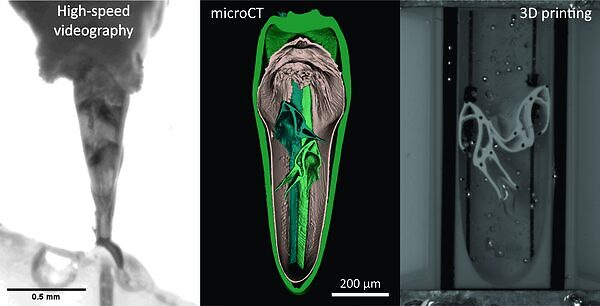Seminar: “The honey bee sting: From high-speed filming to 3D printing” by Dr Fiorella Ramirez Esquivel

Date
Location
Description
Dr. Fiorella Ramirez Esquivel, UNSW Canberra, Australia
Title:
The honey bee sting: From high-speed filming to 3D printing
Abstract:
The honey bee stinger has the unique ability to separate from the bee body and continue to sting autonomously. Not only is this a remarkable anti-predator defence but it also facilitates direct observation of the stinger in action, unobstructed by the abdomen. The stinger’s piercing parts, the lancets, move in a reciprocating motion, propagating the stinger deeper into tissue. At the same time, the motion of the lancets pump venom by displacing the attached valvilli. These act as collapsible pistons, and also move in a reciprocating fashion. This all happens fast and at a micro scale. Each piston has a stroke length of 600µm and a maximum speed of 2000µm/sec. This means that multiple pumping cycles are completed in a single second. Once detached from the body the stinger has no way to replenish its energy stores and motion rapidly decays. Stinging concludes at approximately 30 seconds to 2 minutes post detachment.
In our study we observe the honey bee stinger using a combination of high-speed filming, SEM and microCT. We use these observations to describe the anatomy and kinematics of the stinger and attempt to reproduce its pumping and piercing behaviours using 3D printed, working models. The success of this framework has further allowed us to expand our research and using a similar pipeline we are starting to look at the stingers and ovipositors of a wider variety of Hymenoptera.
Subscribe to the OIST Calendar: Right-click to download, then open in your calendar application.



